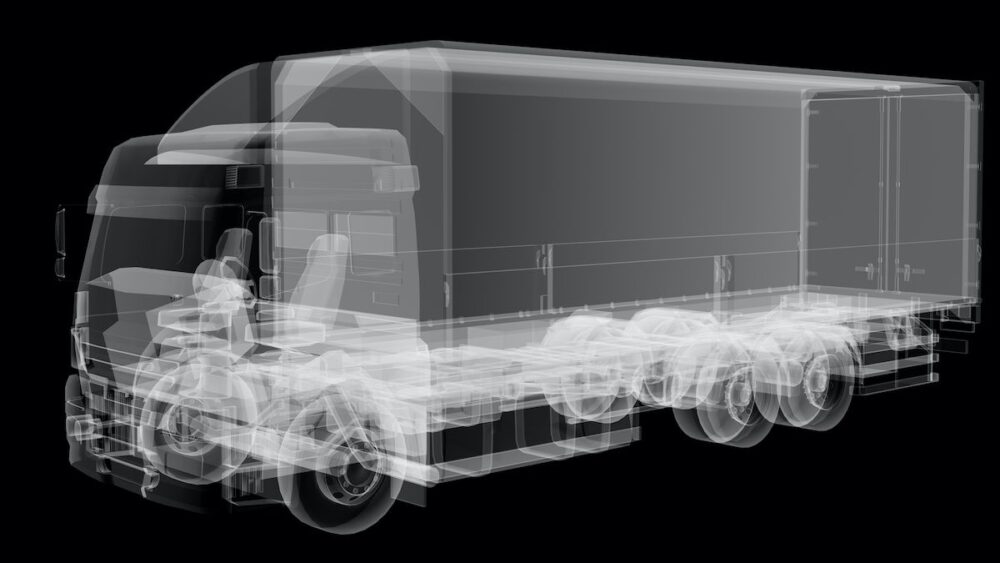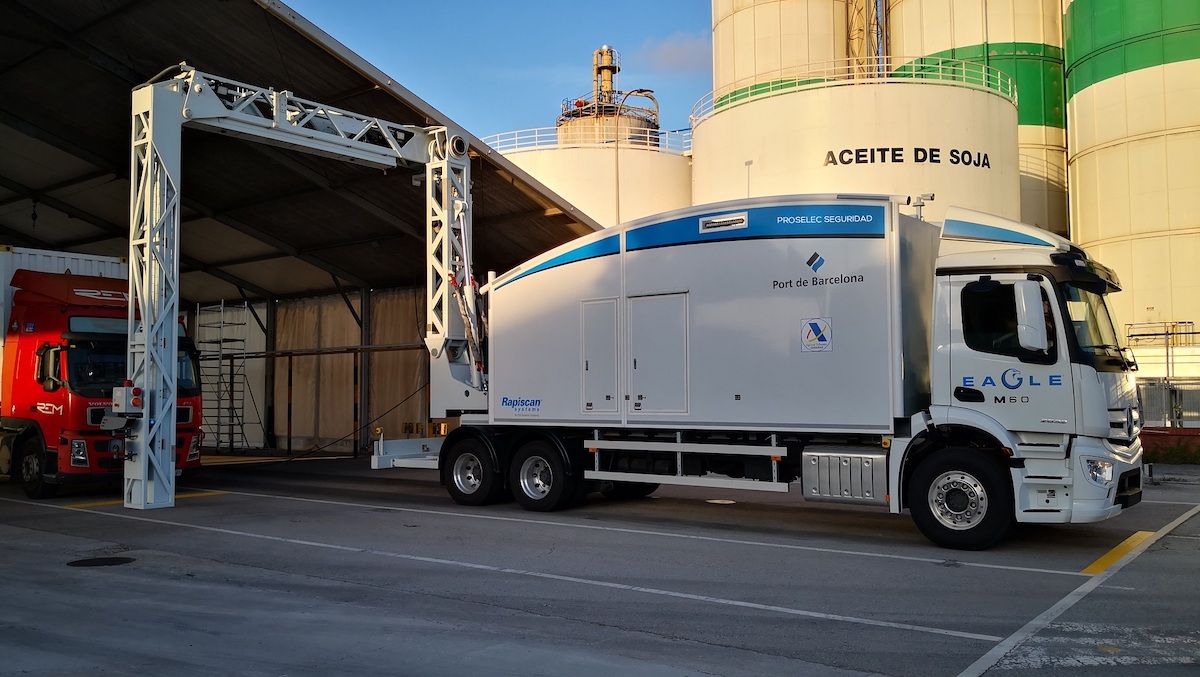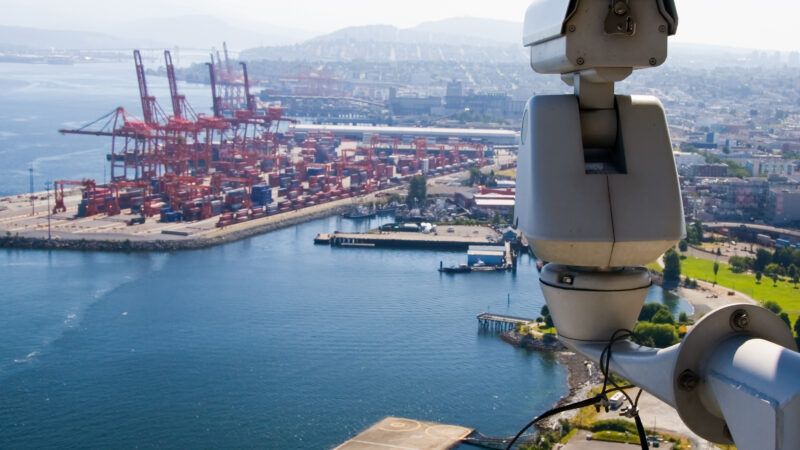 Thanks to the scanners you can know in which area of the truck the radioactive source is located and what is it. (Gettyimages)
Thanks to the scanners you can know in which area of the truck the radioactive source is located and what is it. (Gettyimages)
Non-intrusive scanners: make the invisible visible
Anticipation is the best defense against smuggling and the transport of dangerous goods which threaten security. One of the most effective tools to stop illegal goods entering and leaving the ports are X-ray scanners, which screen container cargo with an increasing level of sophistication.
 Thanks to the scanners you can know in which area of the truck the radioactive source is located and what is it. (Gettyimages)
Thanks to the scanners you can know in which area of the truck the radioactive source is located and what is it. (Gettyimages)
There is no question about the role of ports as main links in the logistics chain. In Spain, 60% of exports and 85% of imports travel through port facilities. Between January and October 2019, Spanish ports moved a total of 466 million tons of goods.
This volume of traffic can pose two threats: the entry and exit of contraband and a security breach. To keep these illegal practices at bay, the most efficient technology is the so-called non-intrusive inspection of containers using X-ray scanners.
So far this year, the Port of Barcelona has in fact seized 2,808 kg of cocaine, 740 kg of hashish and 25 stolen vehicles. Imitations of renowned brands are not far behind; in 2019 34,632 kilos of counterfeit products were intercepted, according to data provided by the Spanish Tax Agency.
Vestiges of the Cold War
The history of non-intrusive inspection is closely linked to one of the periods in recent history: the Cold War. In 2002, The Washington Post published that “nuclear experts from the United States look for devices containing cesium 137 in the republics of the former Soviet Union, as the US Administration fears that these could fall into the hands of extremists who use them to make the so-called dirty bombs.”
“Dirty bombs are small, pen-sized devices that can be hidden anywhere. With the dismantling of the Soviet Union, a lot of fissile material from missiles was lost, so the US financed a series of scan portals in many European ports to control that everything leaving from or arriving at the facilities did not contain radiation," explains José María Santolaya, General Manager of Proselec Seguridad.
Although the installation of these devices is not mandatory, Barcelona is one of the ports in Spain that has a scanner of these characteristics. The port has just upgraded its model to the Rapiscan Eagle M60, a new generation model from Proselec Seguridad.
The Port Authority is in charge of its purchase, but Customs is responsible for its operation. There are two types of scanners on the market: fixed or mobile. In the case of the Port of Barcelona, the new model corresponds to the second modality.

A unique model in Spain
Designed to carry out a flexible inspection, the Eagle M60 is the best-selling, high-energy mobile device in the world. It is a truck built on the chassis of a Mercedes Actros that unfolds an arch with a built-in X-ray machine which is extremely powerful. This model scans trucks in two ways: drive by or portal mode (drive through).
In the first one, the driver leaves the cabin and heads to an exclusion area. Then, the Eagle M60 moves its arch across the truck awaiting inspection. In the second, the scanner truck stands still and the other vehicle crosses the arch. According to Santolaya, the latter is much faster, since it can scan 80 trucks per hour compared to the 15 trucks of the “drive by” mode.
However, the portal mode cannot yet be used in Spain. As the driver remains inside the cabin, it receives a minimum dose of the radiation that bounces off the load. Although it does not exceed the thresholds recommended by the Nuclear Safety Council, it is currently under evaluation. This system is allowed in other countries such as the United States.
The result of the scanner is immediate and its sophisticated software allows it to obtain images “of an impressive clarity and precision,” adds Santolaya. This makes the job of analysts even easier, as they are trained in real scenarios to identify what is out of the ordinary.
“The analysts are located in the truck or in the port offices. The Eagle M60 is also ready to perform remote analysis, since Customs has a project to centralize all images to their head office in Madrid,” explains.
Other characteristics of this scanner truck is that its energy has increased from four to six megaelectronvolts, which allows it to emit a much more open beam to collect the entire image of the truck and increase steel penetration by three centimeters, which limits the ability of smugglers, who previously used to reinforce certain areas of the vehicle to hide illegal goods.
“The result of the scanner is immediate and its sophisticated software allows it to obtain images of an impressive clarity and precision”
José María Santolaya, General Manager of Proselec Seguridad
Innovations which increase security
Santolaya says that, thanks to these improvements, container surveillance is more exhaustive. “With these tools, the analyst can detect anomalies and order load inspection faster. Although we always talk about smuggling, in terms of security it is important to detect not only fraudulent equipment but also in which area of the truck the radioactive source is located and what is it.”
“For example, if we talk about natural radiation, bananas are the quintessential example used to hide dirty bombs. Its high potassium content makes them a radioactive source, and although they always turn all alarms on they manage to pass inspection checks. The same happens with carbon filters used for water, ceramic material and some types of compost. This is why it is essential to know the origin of the radiation, ” he adds.
Technological innovations are also advancing in this field. Santolaya shares that one of the main novelties is backscatter analysis, which interacts with matter in three ways. Until recently, X-rays only analyzed the energy that an object absorbs and transmits.
Backscatter goes one step beyond. It allows to analyze the rays that change direction and energy when bouncing off the scanned object, expanding the possibilities and the quality of the analysis. This is very useful for detecting narcotics, explosives, nitrogen compounds or tobacco, since they have a low atomic number, between four and ten, which makes them go unnoticed.






